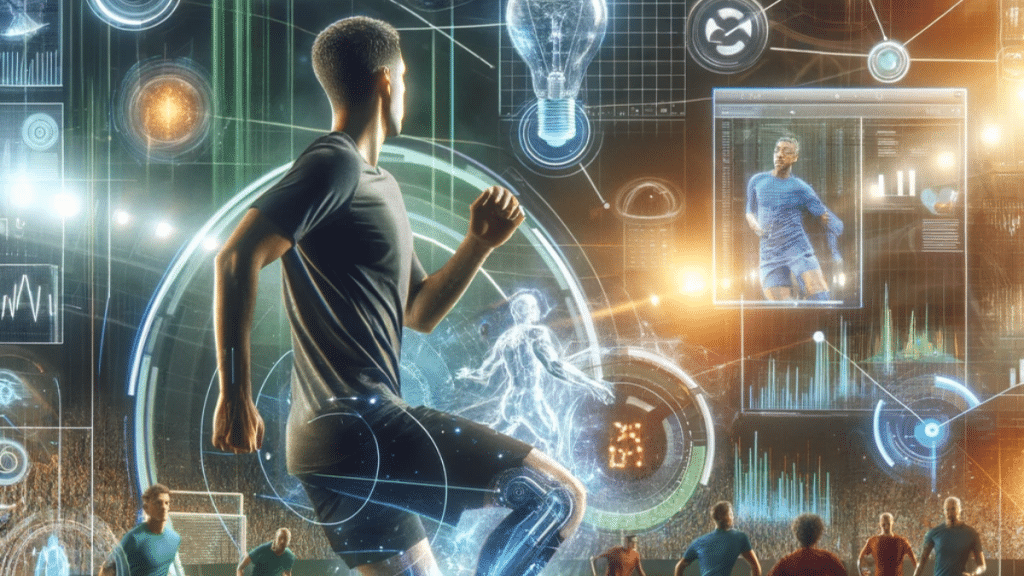In recent years, Artificial Intelligence (AI) has increasingly found a role in enhancing the sports industry, specifically through advancements in sports video analysis. AI and computer vision technologies have become invaluable tools for improving player performance, optimizing coaching strategies, and engaging fans in new, immersive ways. As the demand for real-time insights and data-driven decision-making rises, sports organizations are leveraging AI-powered video analysis to gain a competitive edge. With sophisticated algorithms, machine learning models, and customized computer vision systems, these tools provide an in-depth understanding of the game at every level.
Enhancing Sports Video Analysis through AI and Computer Vision
One of the most powerful applications of AI and computer vision in sports is in real-time game analysis. Advanced AI algorithms can process vast volumes of video data instantaneously, extracting key performance metrics and analyzing game dynamics on the fly. This capability enables coaches and analysts to make informed, strategic decisions in real time. Whether it’s adjusting player positioning based on defensive plays or identifying advantageous matchups, AI’s rapid data processing helps teams react dynamically during the game.
Sports video analysis software plays a central role in this transformation by providing critical features, such as player tracking, heat maps, and automatic tagging of key events. These tools not only streamline the analysis process but also allow analysts to generate actionable insights with ease. Sports video analysis software combines sophisticated AI models and real-time processing capabilities, offering instant data that is crucial for assessing game flow and making tactical adjustments.
Player Performance and Training Optimization
Beyond in-game analysis, AI and computer vision are essential for tracking player performance and optimizing training regimes. AI-based performance metrics, which capture elements such as speed, agility, endurance, and reaction time, provide an objective view of an athlete’s strengths and areas for improvement. With detailed insights into individual and team performance, coaches can tailor training programs that address specific weaknesses or build upon player strengths. This individualized approach enables a more efficient path toward achieving peak performance.
Custom computer vision development services play a significant role in creating these tailored solutions, providing teams and sports organizations with analysis tools suited to their unique needs. This customization allows for greater accuracy in the data collected and offers a highly specialized approach to enhancing training outcomes.
Tactical Analysis and Strategic Decision-Making
AI-based video analysis extends to strategy and tactics by enabling a comprehensive understanding of formations, play styles, and positioning. AI’s data analysis capabilities allow coaches and analysts to identify patterns that may be overlooked in a fast-paced game environment, offering a clear view of effective and ineffective strategies. With this information, teams can better understand their own tactics and identify the strengths and weaknesses of their opponents.
Through detailed tactical analysis, coaches can make data-driven decisions that optimize team strategy and adapt game plans as needed. These insights allow teams to approach each game with a strategy that is both flexible and highly optimized, leveraging AI-powered insights to make winning adjustments during matches.
Enhancing Fan Engagement and Viewing Experiences
The role of AI and computer vision in sports extends beyond performance and strategy enhancement. These technologies also bring a new level of interactivity to the fan experience. Real-time data overlays, including player stats, play-by-play breakdowns, and heat maps, enhance broadcasts by providing fans with insights that were previously only accessible to coaches and analysts. Through augmented reality (AR) integration, broadcasts can now present interactive graphics, such as shot trajectories and player positions, overlaid directly onto live video feeds.
By enhancing viewer engagement, sports organizations can provide fans with a more immersive experience, bridging the gap between in-game action and audience understanding. With AI-backed video analysis and augmented data, fans gain a deeper appreciation for the game’s nuances, and teams benefit from increased engagement and loyalty.
Future Directions for AI and Computer Vision in Sports Analysis
The future of AI and computer vision in sports holds exciting possibilities, with new advancements that promise even greater insights and applications. Emerging trends, such as predictive analytics for anticipating game outcomes and virtual coaching for improving player techniques, are poised to further integrate AI into sports. Additionally, as machine learning models advance, injury prediction algorithms are becoming increasingly accurate, allowing teams to proactively manage player health and reduce risks on the field.
With the continued evolution of computer vision development services, sports organizations can expect to see even more tailored tools for video analysis and player development. These specialized services allow for a level of customization that aligns with the unique requirements of different sports, ensuring that AI-driven solutions remain practical, adaptable, and effective in the sports industry.
Conclusion
AI and computer vision are revolutionizing sports video analysis, transforming how teams approach training, tactics, and fan engagement. By leveraging AI-powered sports video analysis software, teams gain access to real-time insights and data that elevate the quality of their decisions and game strategies. The growth of computer vision development services ensures that sports organizations can continually adopt cutting-edge tools tailored to their specific needs, enabling deeper analysis and optimization across all aspects of the game.
